When you buy products via links on our website, we might receive an affiliate commission. Learn more
14 Succulent Arrangements and Layouts for Your Home
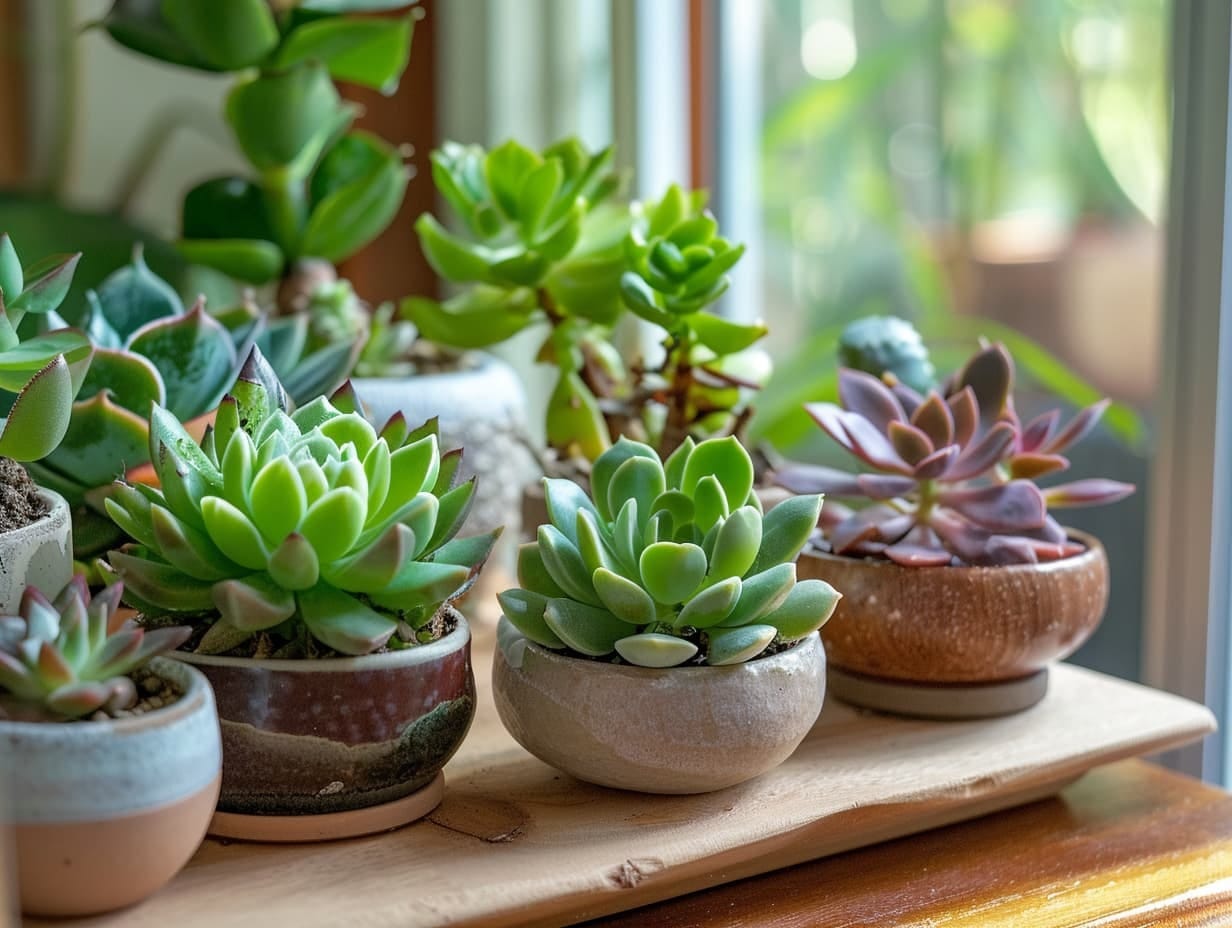
Explore the art of succulent arrangements with our guide to 14 distinctive layouts for every space in your home. From the serene beauty of a succulent centerpiece in your dining room to the innovative charm of upcycled containers, this guide is your roadmap to incorporating these versatile plants into your decor.
Each carefully curated setup not only enhances the aesthetic of your surroundings but also brings the calming essence of nature indoors. Discover how to blend succulents with various textures and color schemes to create living art pieces that captivate and inspire.
Perfect for both beginners and seasoned gardeners, these ideas will transform your living spaces into vibrant oases of green.
Arrange a Succulent Centerpiece for Your Dining Room
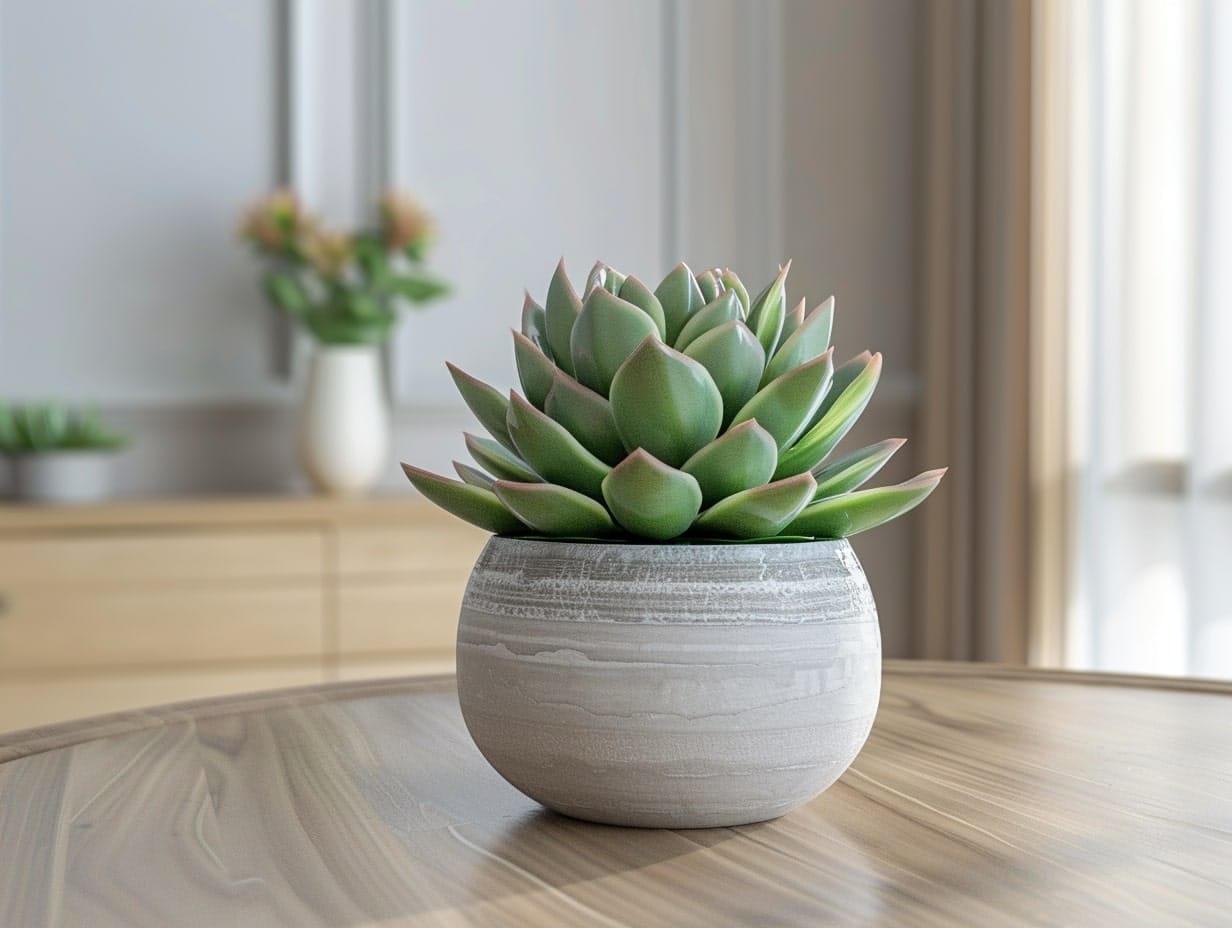
To arrange a succulent centerpiece for your dining room, start by selecting a shallow, wide bowl or dish as your container. Choose an assortment of succulents with varying heights, textures, and colors for visual interest.
Begin with the largest plant in the center to create a focal point. Add smaller plants around it, filling in gaps with tiny succulents or decorative stones. Incorporate moss or sand to add texture and cover any exposed soil. Ensure the arrangement receives plenty of indirect sunlight and water sparingly.
Create Succulent Terrariums Using Glass Containers
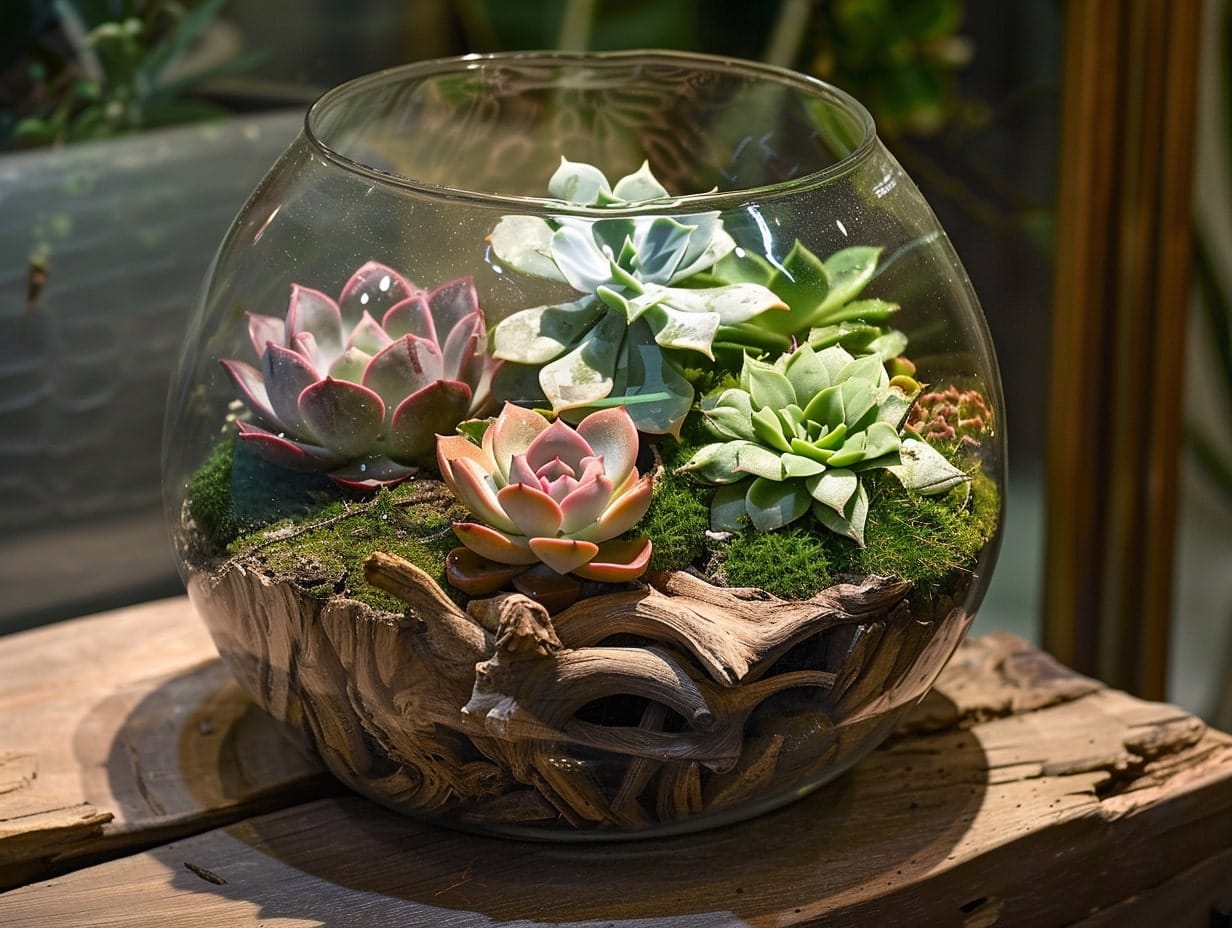
Start by selecting a clear glass container, either with a wide opening or a lid, depending on your preference for a closed or open terrarium. Layer the bottom with gravel or small stones for drainage, followed by a layer of activated charcoal to keep the water fresh.
Add a layer of succulent potting mix, ensuring it’s dry and well-draining. Carefully plant your succulents in the soil, arranging them by size and color for aesthetic appeal. Decorate with pebbles, shells, or decorative moss.
Design a Succulent Wall Art Piece Using a Wooden Frame
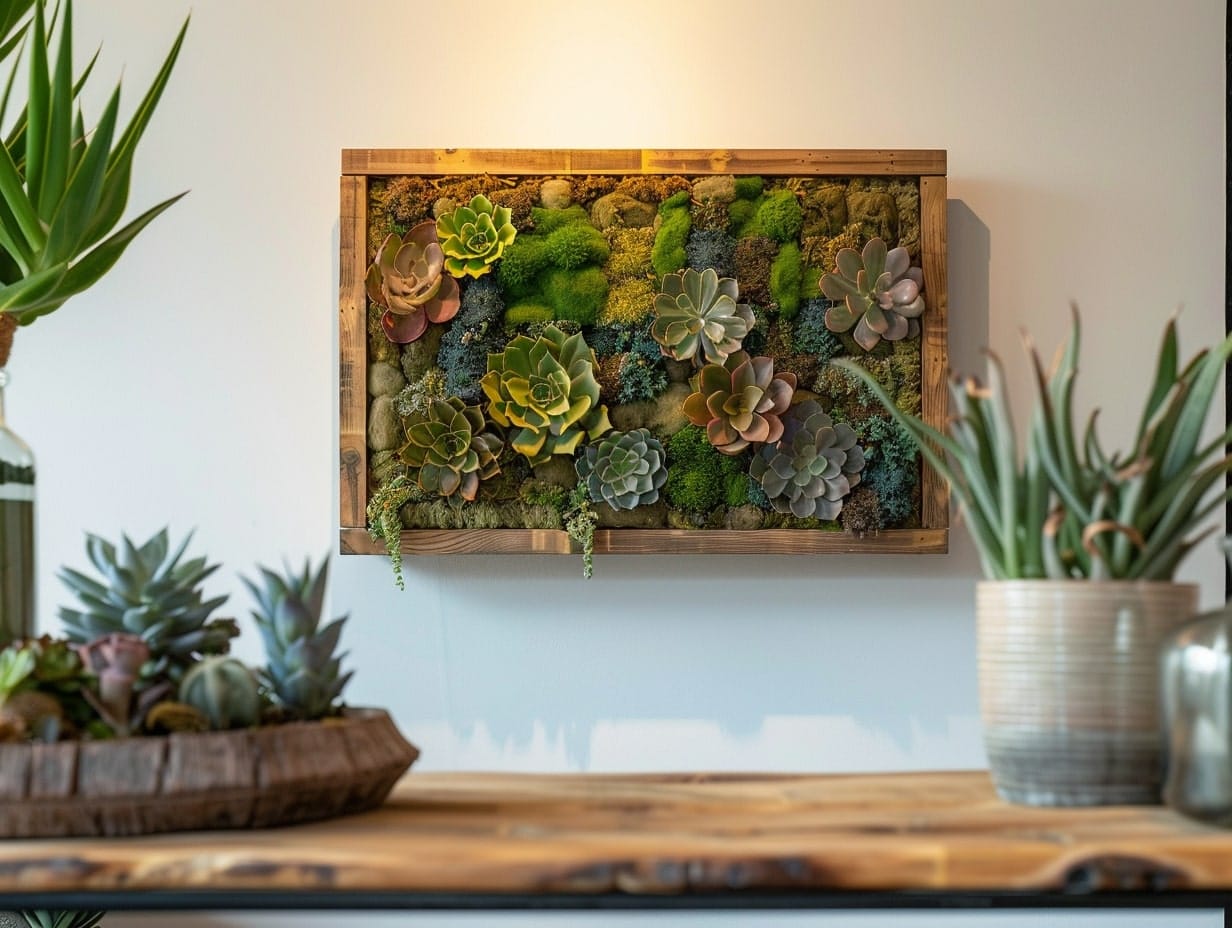
Begin by selecting a wooden frame that suits the size of the wall space you intend to decorate. Attach a backing board to the frame, if not already in place, and secure a layer of chicken wire across the front to hold the succulents.
Fill the frame with a high-quality succulent potting mix, ensuring the soil is compact and stable. Choose a variety of succulents with different textures, sizes, and colors. Insert the roots gently into the chicken wire, arranging them to form a visually appealing pattern or design.
Mix Succulents With Cacti for a Textured Desert Garden Display
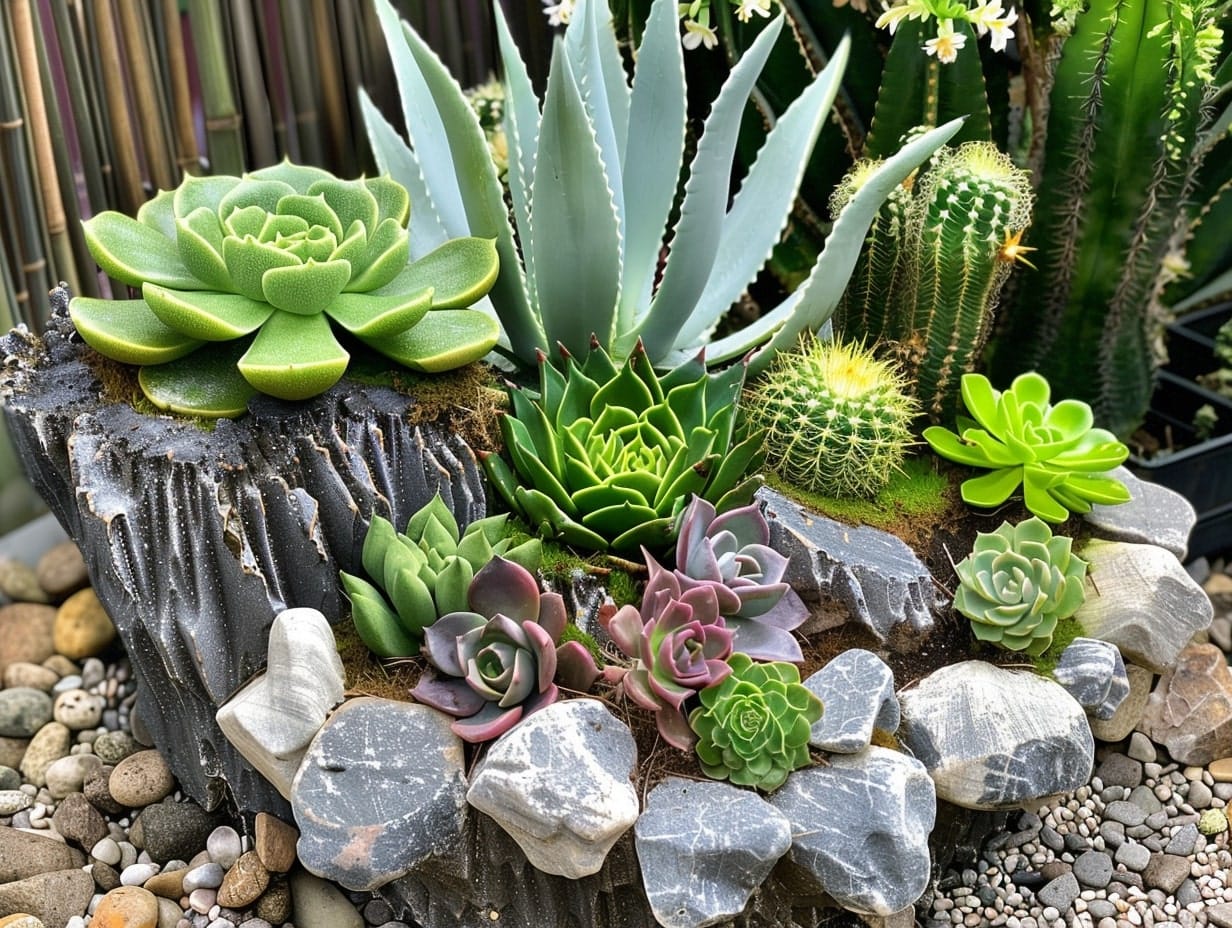
Choose a variety of cacti and succulents with different sizes, shapes, and colors to achieve contrast and interest. Use a wide, shallow container or a designated section of your garden for this arrangement.
Start by filling your container or space with a well-draining cactus mix, which will support the health of both plant types. Arrange taller cacti in the back or center as focal points, and surround them with lower-growing succulents to fill in the space and create layers.
Consider adding decorative rocks, sand, or driftwood to enhance the desert theme.
Create a Hanging Succulent Garden
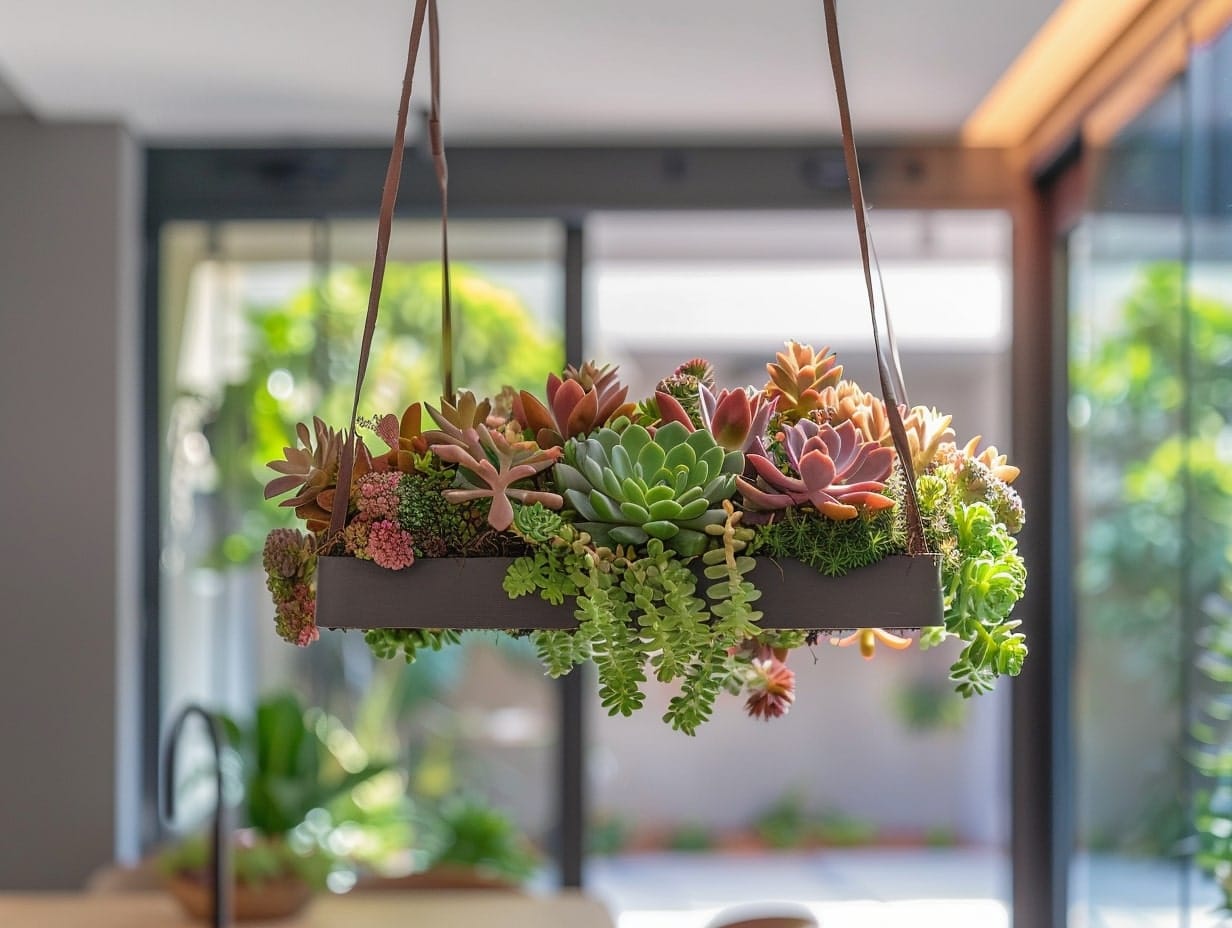
Start by selecting a variety of small succulents, focusing on those with trailing habits like String of Pearls or Burro's Tail.
Choose hanging containers or create your own using materials such as macramé holders, old birdcages, or even repurposed items like colanders. Fill each container with a well-draining succulent soil mix.
Plant the succulents, ensuring each one is secure and has room to grow. Arrange the containers at different heights to create a layered effect. Hang them in a location that receives bright, indirect sunlight.
Incorporate Succulents Into Your Bathroom for Decor
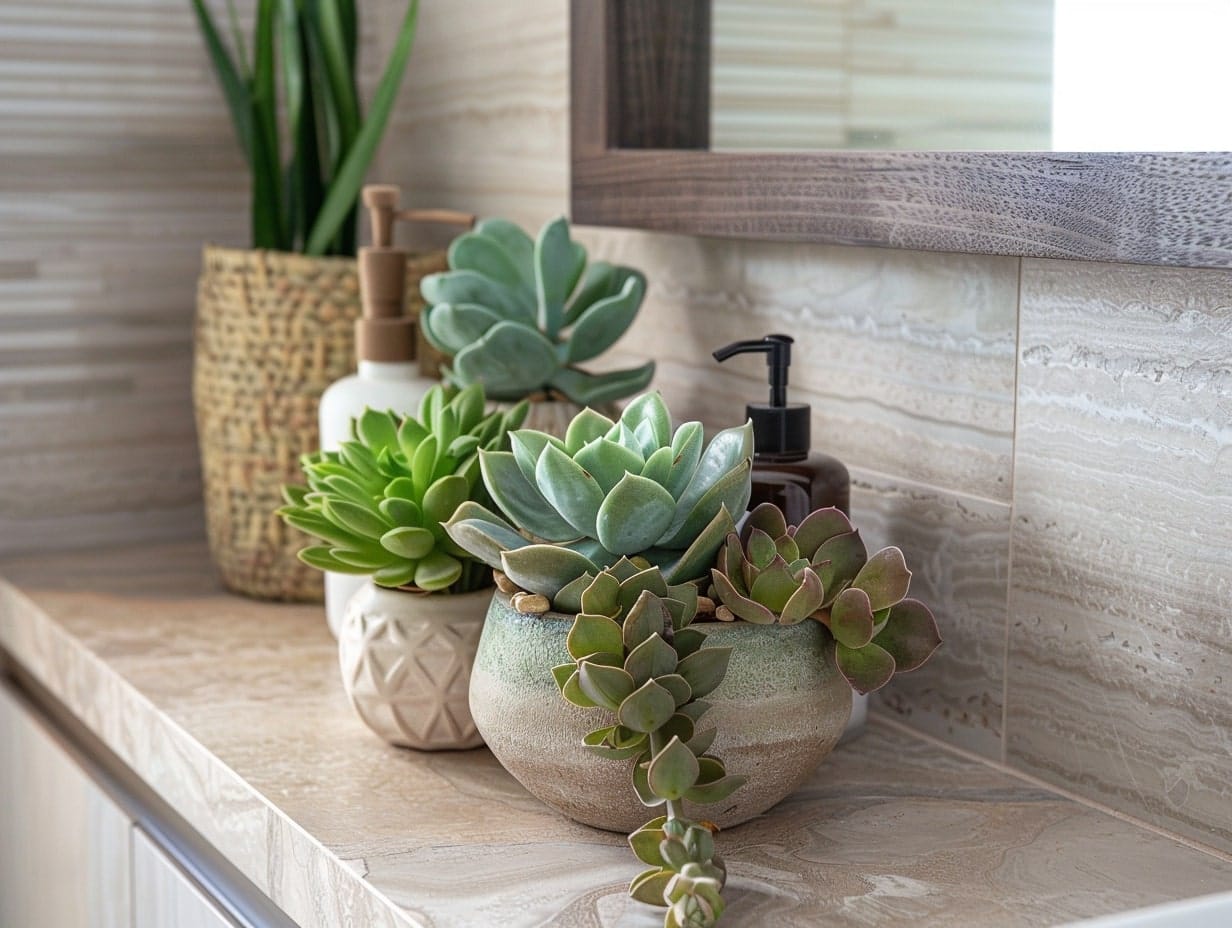
Start by selecting succulents that prefer indirect light, such as Aloe Vera, Echeveria, or Haworthia, as most bathrooms have limited natural light. Choose small containers that complement your bathroom’s color scheme and style.
Ceramic pots or clear glass containers work well for a clean, modern look. Place the succulents on windowsills, shelves, or countertop corners. For a creative touch, hang small succulents in wall-mounted planters or recycled glass jars.
Decorate a Coffee Table With Small Succulents in Ceramic Pots
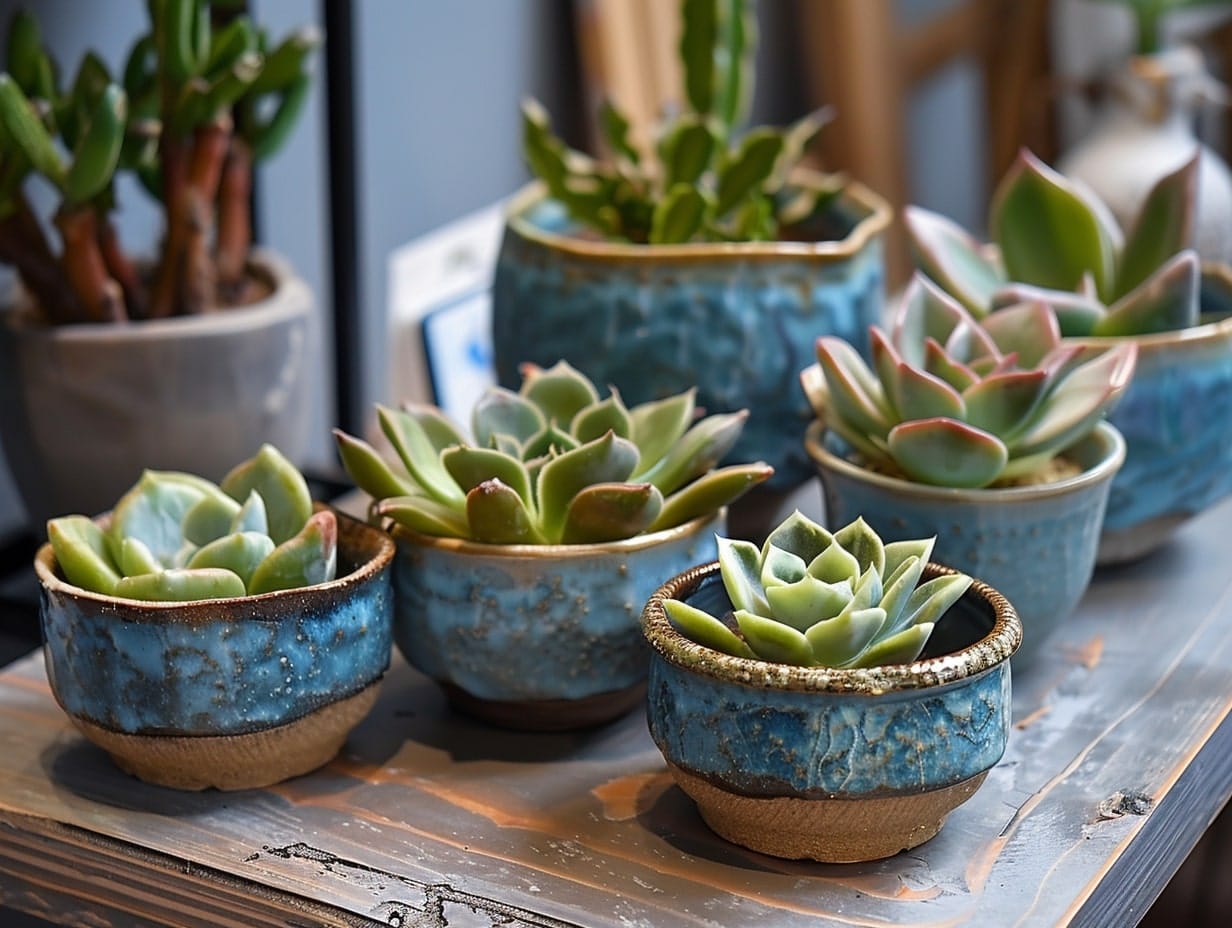
Choose a variety of small succulents, such as Echeveria, Jade, or Sedum, which are well-suited for indoor conditions and require minimal care. Opt for ceramic pots that complement or contrast with your coffee table’s color and style; consider textures and colors that match your room's decor.
Arrange the pots in a cluster for a cohesive look, or space them out along the table to create a dotted line effect. You can also incorporate decorative elements like pebbles, sand, or small ornaments within the pot to enhance the aesthetic appeal.
Enhance Your Backyard Patio With Large Succulent Planters
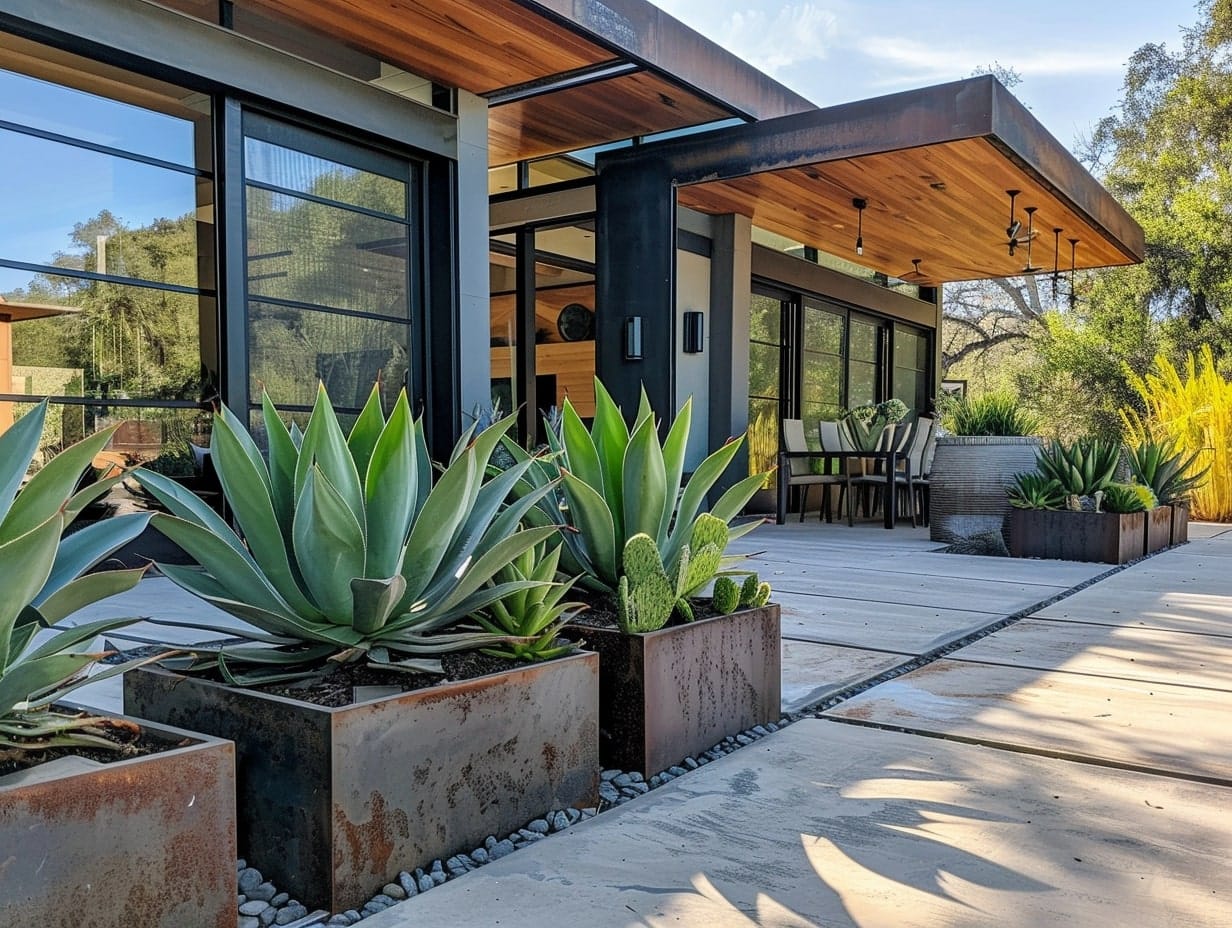
Start by selecting large, durable planters that complement the exterior decor of your home. Materials like stone, concrete, or heavy-duty plastic work well for outdoor conditions. Choose a variety of large succulents, such as Agave, Aeonium, and large species of Echeveria, which can create a dramatic visual impact.
Plant them using a high-quality, well-draining cactus mix to ensure proper drainage and healthy growth. Arrange the planters in strategic locations on your patio, such as corners or alongside seating areas, to serve as natural focal points.
Plant Succulents in an Upcycled Container
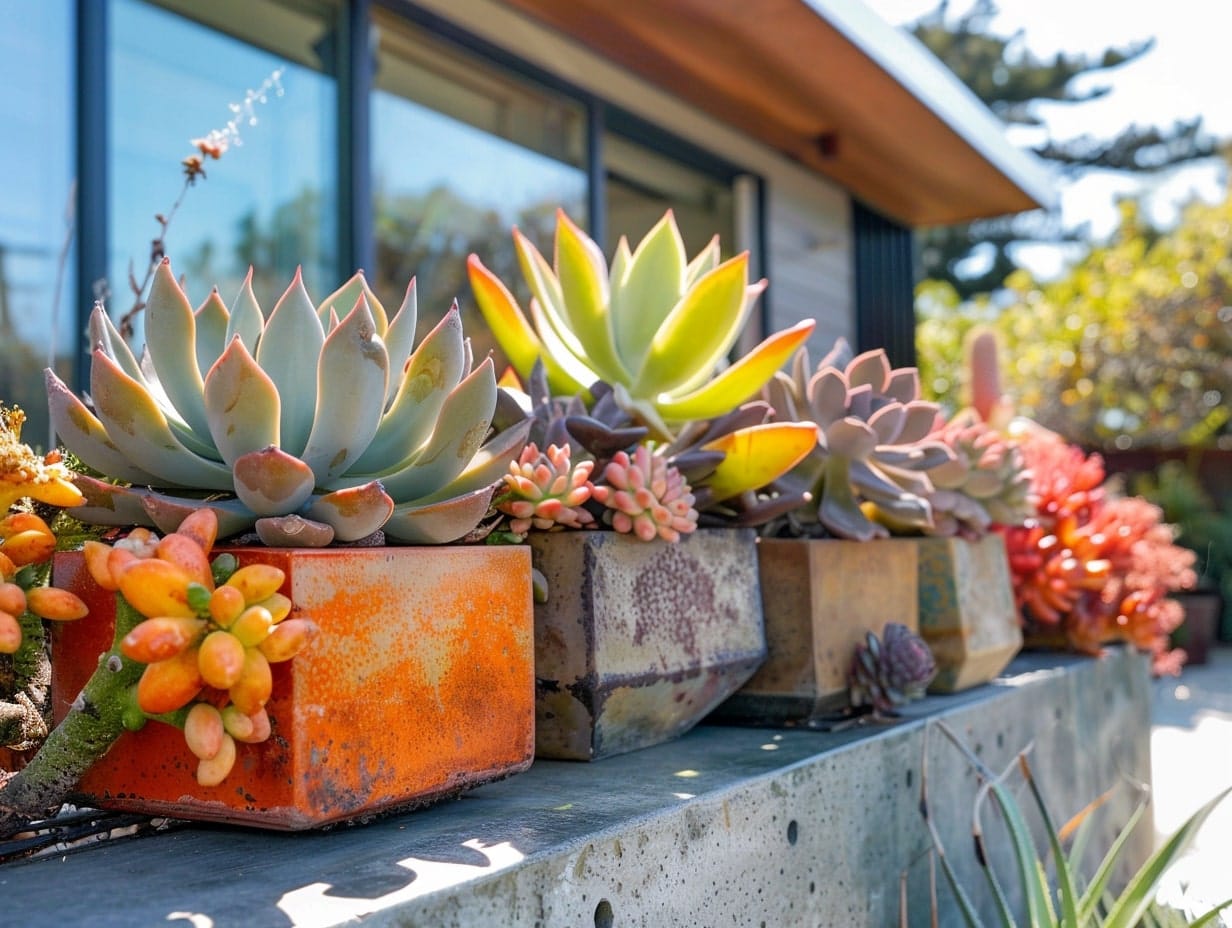
Start by selecting interesting containers you might already have, such as old teacups, mason jars, tin cans, or even broken pots. Ensure each container has drainage holes; if not, you can drill them yourself or add a layer of pebbles at the bottom to manage excess water. Fill the containers with a well-draining succulent potting mix.
Choose a variety of small succulents, focusing on different textures and colors to create an appealing mix. Carefully plant the succulents in the containers, and if needed, use small tools to position them without damaging their leaves.
Build a Tiered Succulent Garden Using Stacked Planters
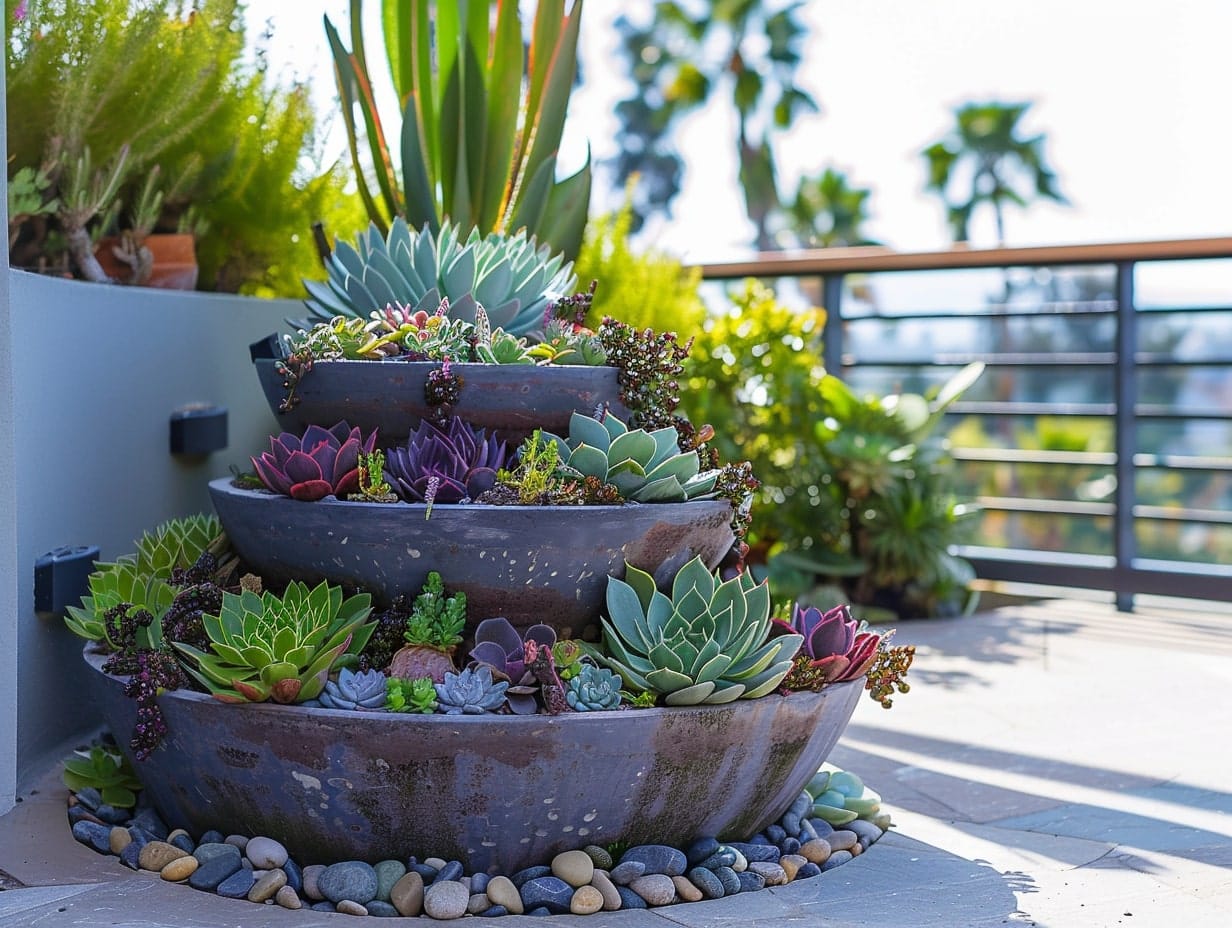
Start by selecting planters of various sizes that can stack or nest comfortably within each other, creating a vertical tier effect. Terra cotta pots or modern geometric shapes in concrete or ceramic work well for this purpose.
Begin with the largest planter at the bottom and fill it with a well-draining succulent soil mix. Plant the largest succulents in this base layer, focusing on varieties that can grow larger and wider, such as Agave or larger Echeveria species.
Stack the next smaller planter on top and repeat the planting process, opting for medium-sized succulents like Sedum or Graptopetalum. Continue this pattern with the smallest planter at the top, using smaller, more delicate succulents such as Haworthia or small Sedum varieties.
Decorate a Garden Pathway With Succulents
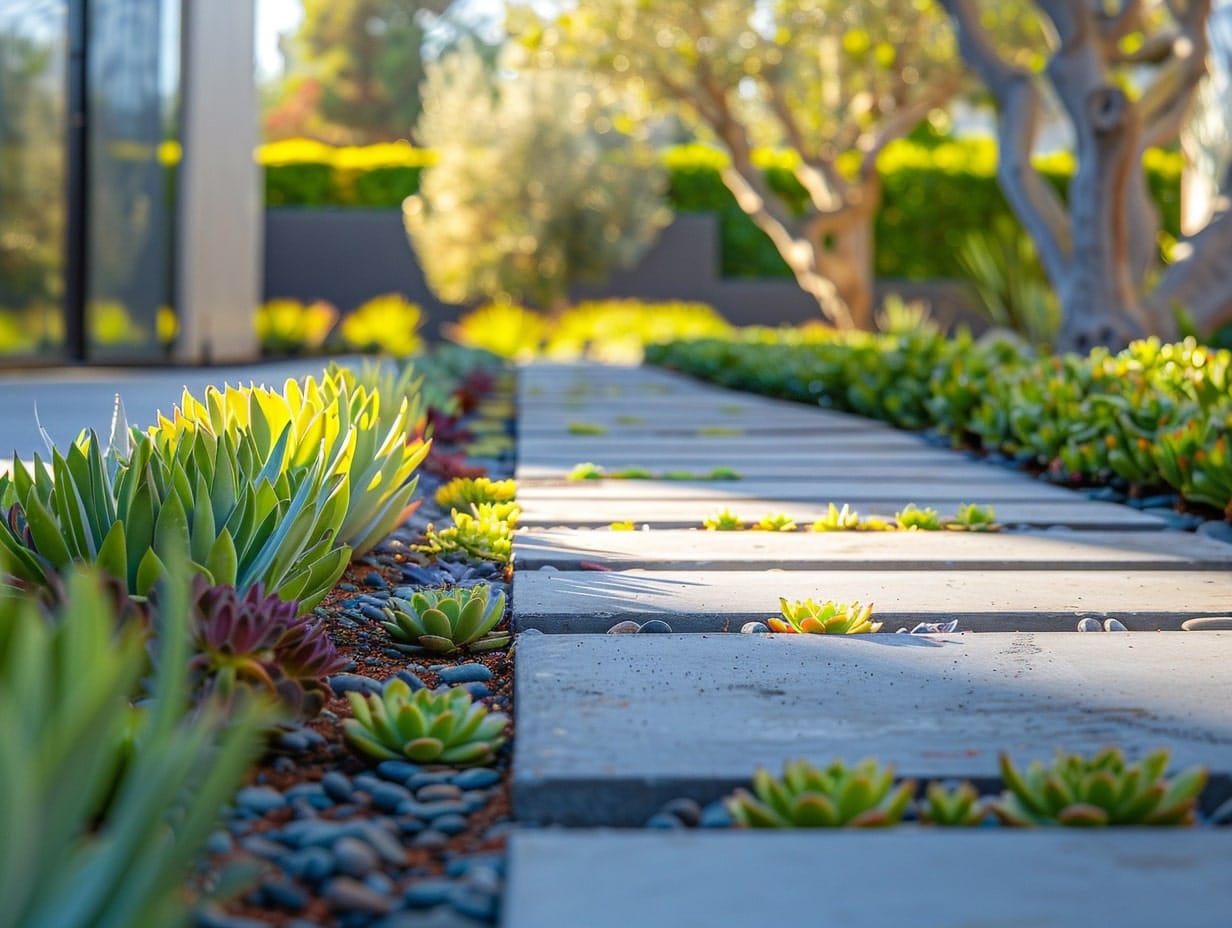
Start by selecting hardy ground-cover succulents, such as Sedum or Sempervivum, which can tolerate foot traffic and spread easily. Prepare the soil along your pathway by clearing any weeds and adding a layer of well-draining soil mixed with gravel or sand to promote good drainage, essential for succulent health.
Plant the succulents intermittently along the edges of the pathway, spacing them according to their spreading capabilities. For visual interest, use larger, accent succulents like Agave or Aeonium strategically at corners or turns in the path.
Beautify Your Entryway With Tall Succulent Plants
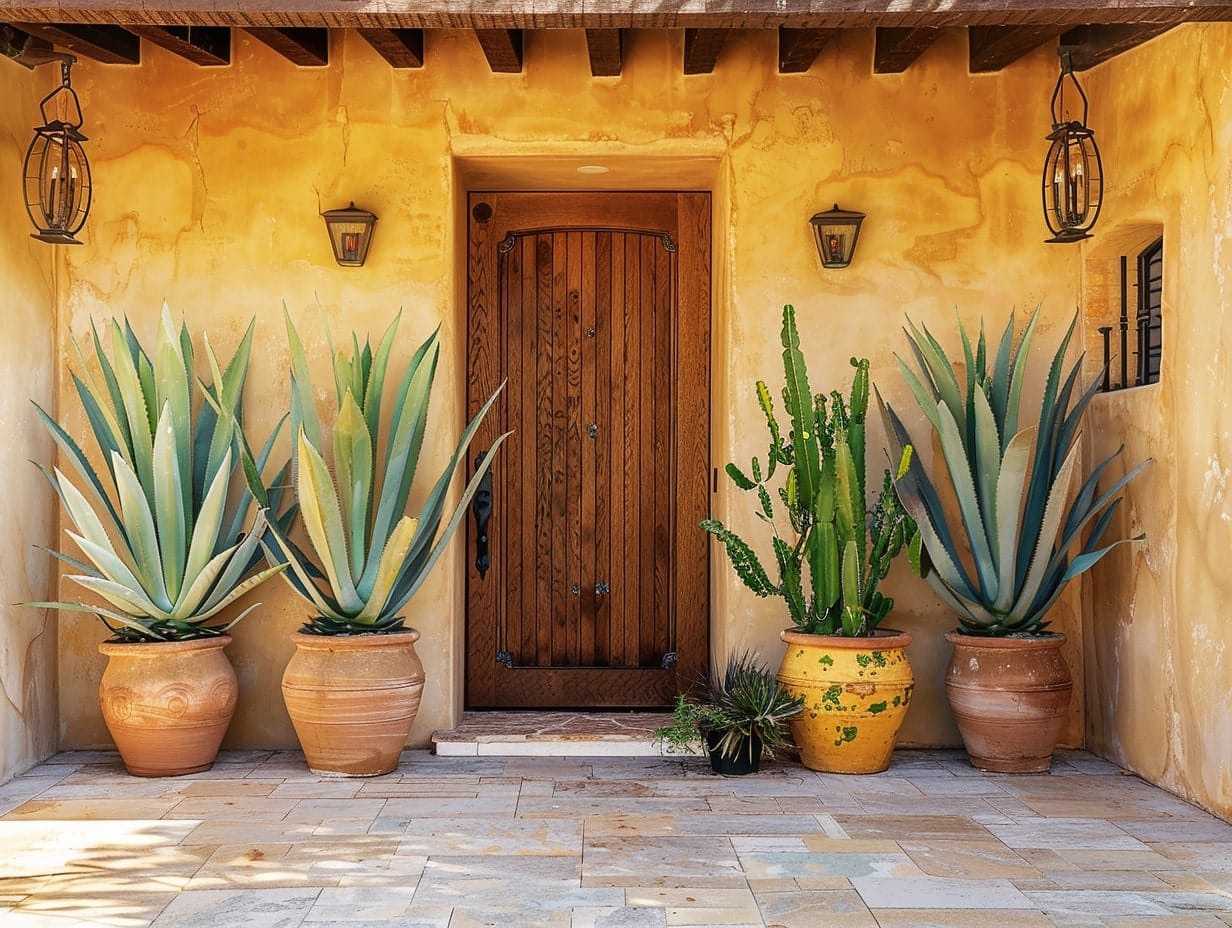
Start by selecting large, architectural succulents that can grow tall, such as Yucca, Aloe Vera, or Agave. These plants make bold statements and can handle the often fluctuating temperatures of entryways.
Choose sturdy, attractive pots that complement the exterior design of your home. Consider using materials like polished concrete, ceramic, or rustic metal to add to the aesthetic appeal. Position the pots strategically on either side of your entryway or along the walkway to guide visitors towards the door.
Pair Succulents With Leafy Greens for a Mix and Match Vibe
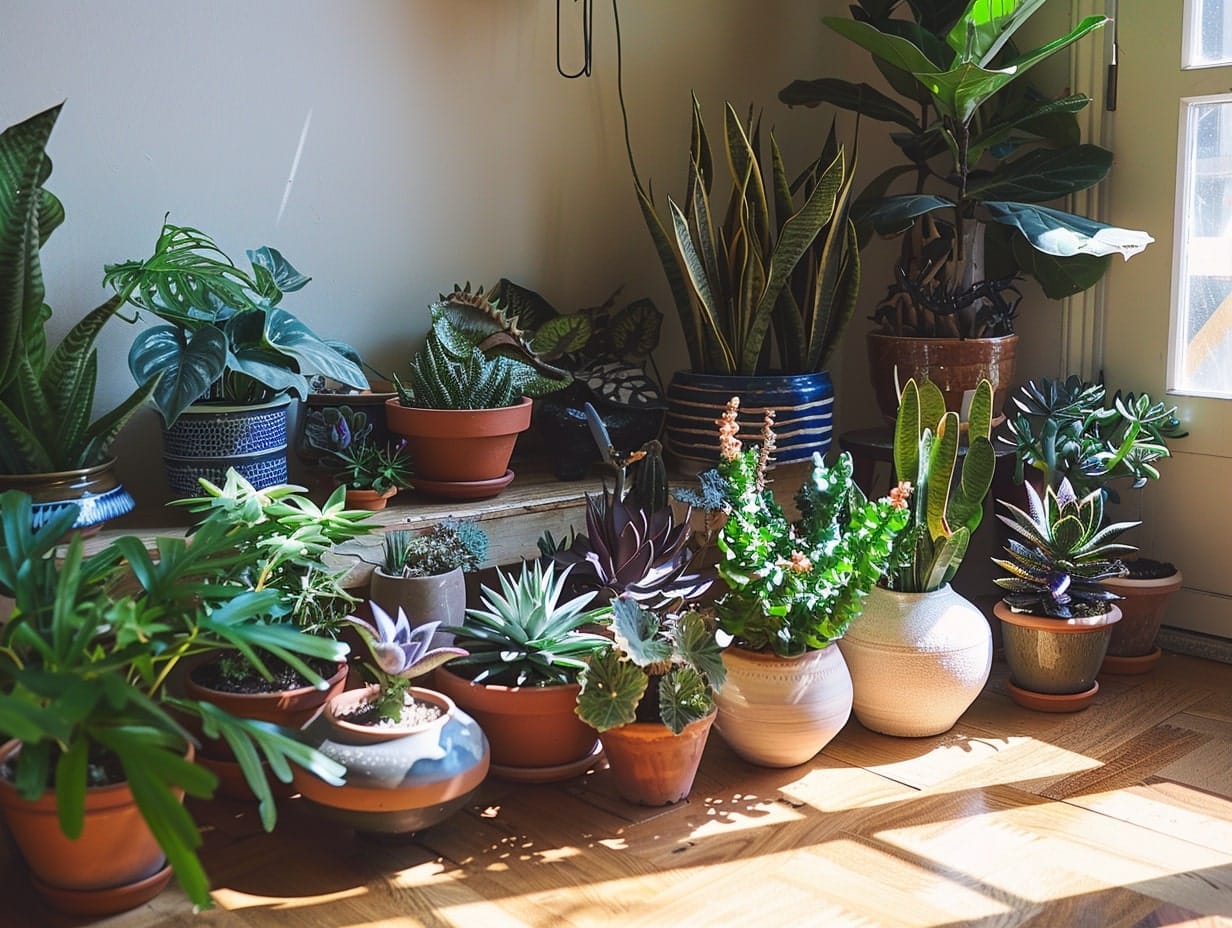
Choose a variety of succulents with different textures and colors, such as rosette-shaped Echeveria or spiky Haworthia. Complement these with leafy greens like ferns, spider plants, or pothos, which add a lush, vibrant contrast to the structured forms of succulents.
For indoor arrangements, select pots that match or coordinate in style and color to unify the diverse plants. If you're planning an outdoor setting, consider larger planters or mixed beds that can accommodate both types of plants. Ensure there's enough space for each plant to grow without overcrowding.
Synchronize the Succulents With Your Home’s Color Theme
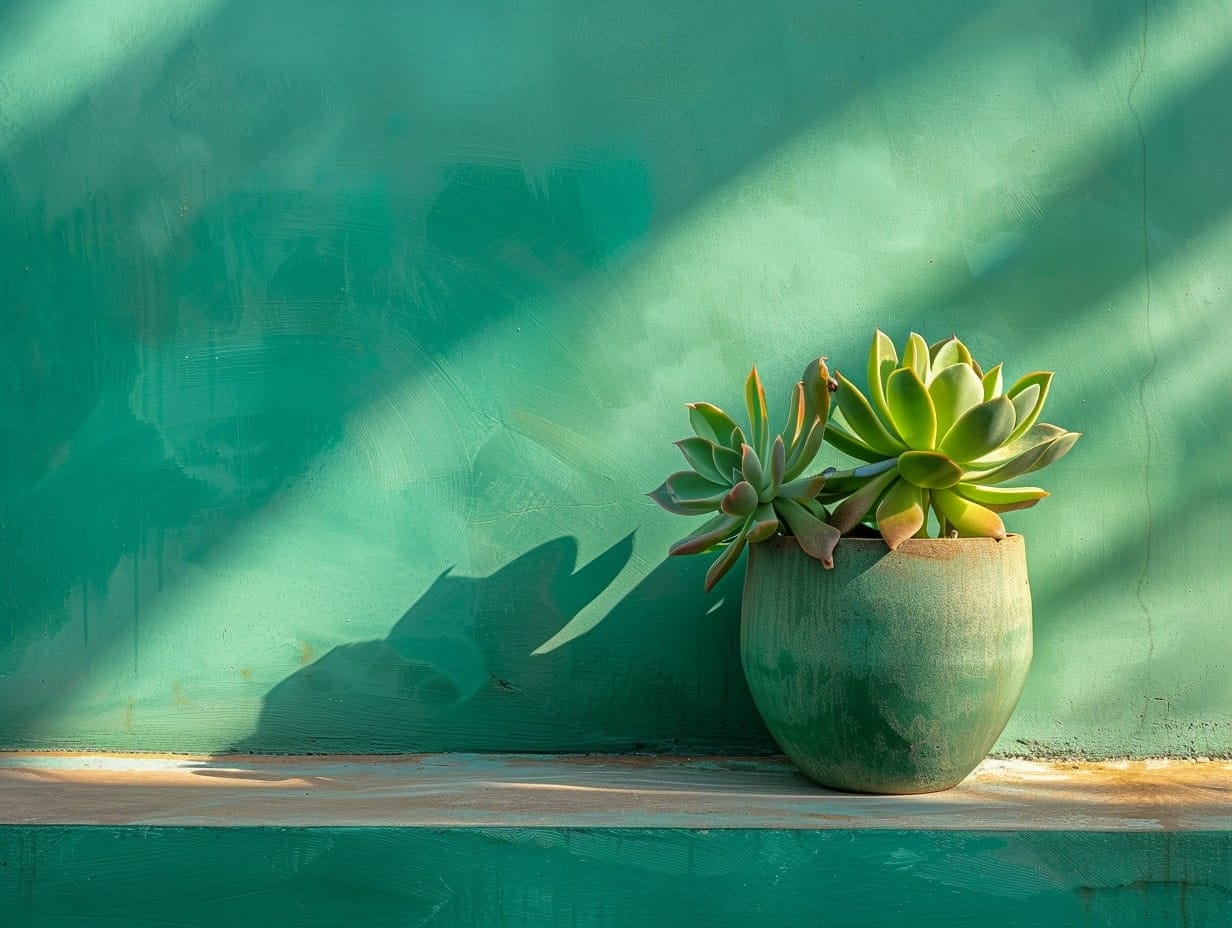
Start by identifying the predominant color palette of your home. Choose succulents that either complement or contrast with these colors for a harmonious or striking visual effect. For instance, if your home features warm tones like reds, oranges, and yellows, select succulents with red-tipped leaves, such as Echeveria 'Afterglow' or Sedum adolphii.
Use pots and planters that match or coordinate with your interior colors. Consider ceramic pots in shades that echo your wall colors, fabric tones, or furniture hues. For a minimalist look, white or black pots can make the vibrant greens and other colors of succulents pop.
